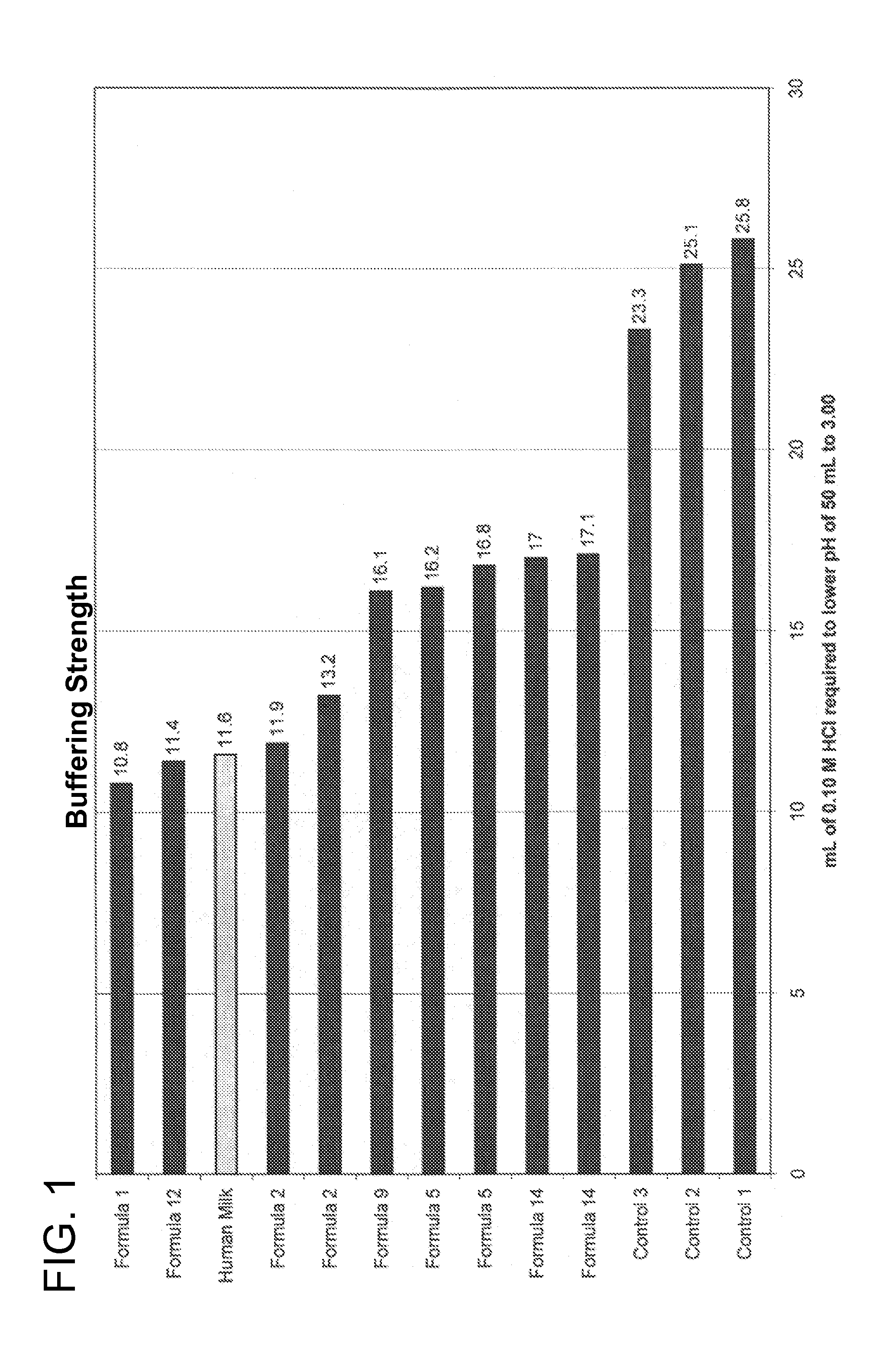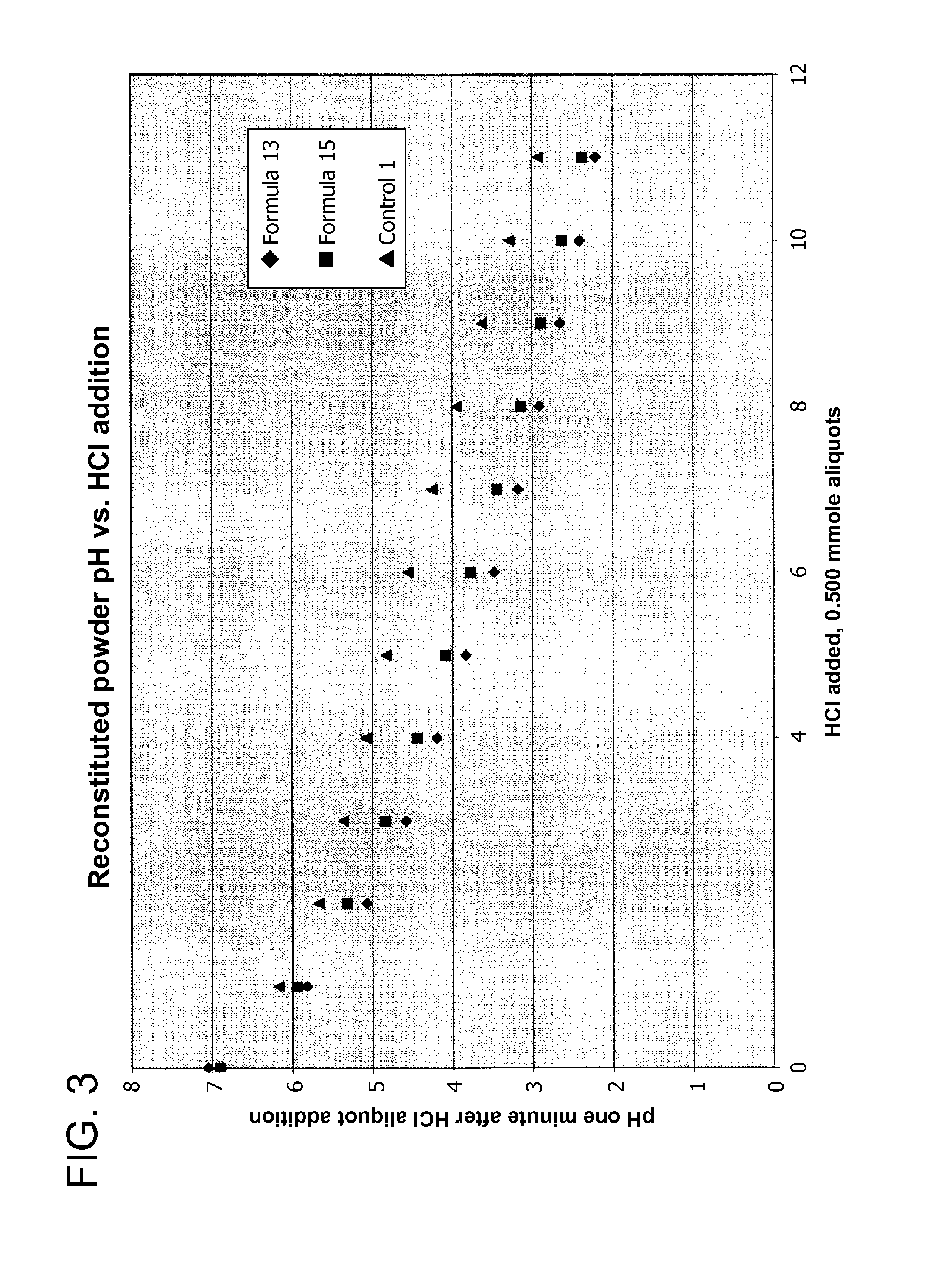Tolerance in a low calorie infant formula
a low-calorie, infant formula technology, applied in the field of low-calorie infant formulas, can solve the problems of poor physical attributes of formulas, increased problems, and typically darker colors, and achieve the effects of reducing calorie, improving physical attributes, and reducing calori
- Summary
- Abstract
- Description
- Claims
- Application Information
AI Technical Summary
Benefits of technology
Problems solved by technology
Method used
Image
Examples
examples
[0221]The following examples illustrate specific embodiments and / or features of the infant formulas and methods of the present disclosure. The examples are given solely for the purpose of illustration and are not to be construed as limitations of the present disclosure, as many variations thereof are possible without departing from the spirit and scope of the disclosure. All exemplified amounts are weight percentages based upon the total weight of the composition, unless otherwise specified.
[0222]Unless otherwise specified, the retort sterilized and aseptic sterilized formulas prepared in accordance with the manufacturing methods described herein, are ready-to-feed liquid formulas.
examples 1-8
[0223]In these examples, 2 oz. retort sterilized days 1-2 and days 3-9 infant formulas were prepared with either high or low micronutrient content. The ingredients used to prepare the formulas are set forth in Tables 1 and 2 below.
TABLE 1Days 1-2 FormulasFormula 1Formula 2Formula 3Formula 4Units(days 1-2)(days 1-2)(days 1-2)(days 1-2)EnergyKcal / L270270250250Micronutrient contentlowlowhighhighIngredients(Amount Per 1000 Kg batch)WaterkgQ.S.Q.S.Q.S.Q.S.Lactosekg23.223.115.515.2Nonfat Dry Milkkg11.011.011.011.3Galactooligosaccharideskg4.404.404.404.40High Oleic Safflower Oilkg5.345.355.335.37Soy Oilkg4.004.003.994.00Coconut Oilkg3.823.823.813.84Whey Protein Concentratekg2.702.702.702.861N KOHg13401.4013401340Potassium Hydroxideg67.070.067.067.0Calcium Phosphate Dibasicg327.1249.81090770.2Potassium Citrateg3.101.2413701240Calcium Citrateg351.0578.8752.6768.9Ascorbic Acidg727.5727.5727.5727.5ARA Oilg367.9367.9367.9367.9Nucleotide-Choline Premixg328.5328.5328.5328.5Dicalcium Phosphateg———...
examples 9-11
[0230]In these examples, 32 oz. aseptic sterilized days 3-9 infant formulas were prepared with either high or low micronutrient content. The ingredients used to prepare the formulas are set forth in Table 3 below.
TABLE 3Formula 9Formula 10Formula 11Units(days 3-9)(days 3-9)(days 3-9)EnergyKcal / L406410410Micronutrient ContentlowhighhighIngredientsAmount per 1000 kg batchWaterkgQ.S.Q.S.Q.S.Lactosekg37.033.734.03Nonfat Dry Milkkg16.317.016.47Galactooligo-kg8.638.638.63saccharidesHigh Oleic Safflowerkg7.727.837.72OilSoy Oilkg5.785.875.78Coconut Oilkg5.525.605.51Whey Proteinkg4.004.194.05Concentrate1N KOHkg1.851.851.85Potassium Hydroxideg92.592.592.5Calcium Citrateg675.0716.8993.9Calcium Phosphateg577.411701390DibasicAscorbic Acidg431.7431.7431.7ARA Oilg378.2378.2378.2Nucleotide-Cholineg319.7319.7319.7PremixSoy Lecithing206.0206.0206.0Distilled Mono-g206.0206.0206.0glyceridesCarrageenang200.0240.0200.0DHA Oilg137.9137.9137.9Magnesium Chlorideg128.9279.3285.9Potassium Chlorideg118.5213.91...
PUM
 Login to View More
Login to View More Abstract
Description
Claims
Application Information
 Login to View More
Login to View More - R&D
- Intellectual Property
- Life Sciences
- Materials
- Tech Scout
- Unparalleled Data Quality
- Higher Quality Content
- 60% Fewer Hallucinations
Browse by: Latest US Patents, China's latest patents, Technical Efficacy Thesaurus, Application Domain, Technology Topic, Popular Technical Reports.
© 2025 PatSnap. All rights reserved.Legal|Privacy policy|Modern Slavery Act Transparency Statement|Sitemap|About US| Contact US: help@patsnap.com



